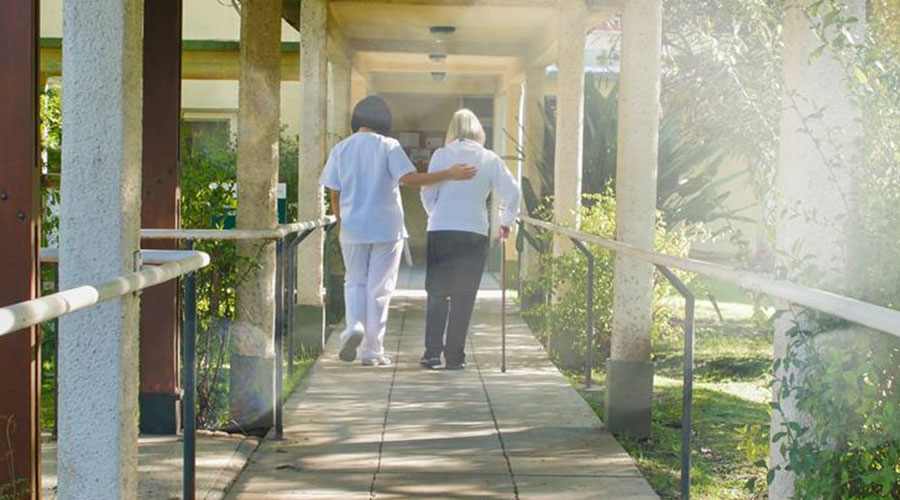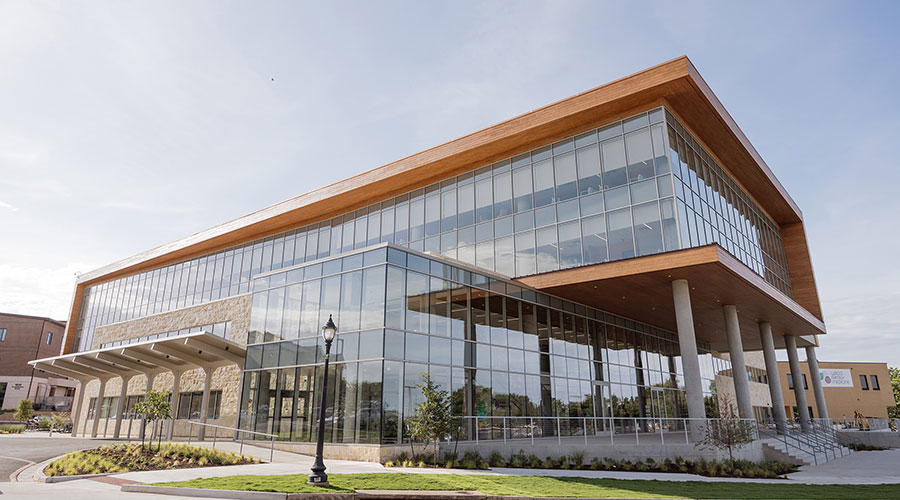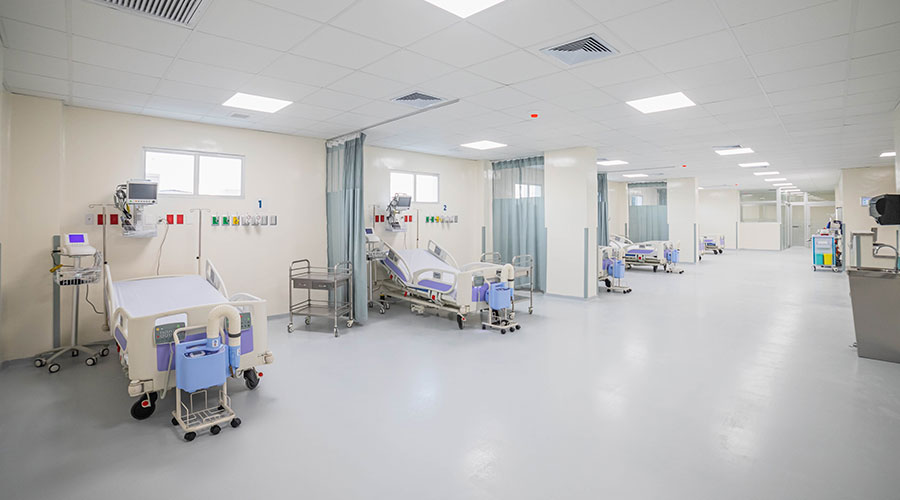LED lighting is a growing trend in buildings today and for very good reason. It delivers significant energy savings compared to traditional light sources. And, illumination, lifespan and color qualities continue to impress.
While the most talked about benefits of LED are also the most compelling reasons behind why more and more senior living developments are converting to this source, there are also additional benefits that are often overlooked. Quality LED lighting can put facility managers and residents at ease with the ability to solve some of the most common problems experienced with lighting. Here we explore the top three:
1. High ceilings: a maintenance manager’s nightmare
Nine foot ceilings have become the new norm for residential living and even 10 foot and higher ceilings have become more common in many of today’s spaces. With ceiling heights on the rise, there is never a convenient time to pull out a ladder and replace a light bulb. Traditional bulbs can burn out frequently in common areas and many residents in a managed complex may not have a ladder tall enough to reach the lighting in their units, or may not feel safe scaling a ladder. This leaves added responsibility on the maintenance staff to haul a ladder around changing light bulbs throughout the facility.
This is specifically why rooms with high ceilings are a prime location for LED lighting. Delivering as much as 50,000 hours of continuous light output, quality LED luminaires such as those from Lithonia Lighting can last for years without worry— reducing the time, hassle and inconvenience of changing light bulbs.
2. Maintaining proper outdoor lighting for security
The scene is not uncommon with traditional luminaires… there is beautiful outdoor or pathway lighting, but one bulb is out, dimmed or flickering and you are immediately drawn to it. Or even worse, the floodlights and perimeter lighting installed for resident and visitor security is out and causes complaints. Oftentimes, the lighting in your outdoor space stays on all night, 365 days a year. Whether lighting pedestrian walkways or parking areas, this outdoor illumination is important for both aesthetics and the safety of residents and guests.
LED lighting is an excellent solution for outdoor spaces because the long-lifespan of 10 or more years provides facility managers and residents assurance that their lighting will be long-lasting and reliable. Crisp, white LED light can revive dark or poorly lit areas to improve visibility and safety. And unlike other light sources, LED luminaires do not lose their lumen output over time like traditional fixtures, ensuring overall uniformity.
By adding controls, such as motion and dusk-to-dawn sensors, energy usage can be reduced or automatically dimmed when there is no activity or natural light becomes present. This saves on energy costs, reduces labor costs and extends the life of the fixtures— helping property managers keep outdoor areas well-lit.
3. 24/7 lighting: Drains energy and requires ongoing maintenance
Properly illuminated hallways and corridors are extremely important for safety and functionality in senior living developments. Because these areas require constant illumination, lighting can be not only a big expense, but a hefty task to maintain as well.
LED lighting offers a host of benefits making it perfect for solving challenges with this type of application. While quality illumination and energy savings alone make LED lighting an ideal choice, many LED fixtures are commercial-rated for 24/7 operations. LED fixture options such as flush mounts, wall mounts and recessed lights—many requiring no bulb to change— marry LED technology and versatile designs to deliver years of worry-free performance and peace of mind.
Additionally, the use of AC-driven LED boards eliminate “buzz” and flickering to provide an even more comfortable and attractive lighting experience. For switch-operated spaces like hallways and closets, LED lighting is instant-on and the life is not affected by constant switching from off to on as it is with incandescent sources.
While every facility is different, LED lighting can solve common challenges in senior living developments. Options are available in many styles and fixture-types that fuse high performance LED technology with pleasing aesthetics to help reduce energy costs, decrease maintenance time and help increase safety and security.
Ryan Ramaker is a product marketing manager for Lithonia Lighting.

 Designing Hospitals for Wellness
Designing Hospitals for Wellness Baptist Health Announces New Cancer Care Center in Key West
Baptist Health Announces New Cancer Care Center in Key West Waco Family Medicine Achieves Savings and Bold Design with Wood Selections
Waco Family Medicine Achieves Savings and Bold Design with Wood Selections Alleged Ransomware Administrator Extradited from South Korea
Alleged Ransomware Administrator Extradited from South Korea Design Plans Unveiled for New Intermountain St. Vincent Regional Hospital
Design Plans Unveiled for New Intermountain St. Vincent Regional Hospital